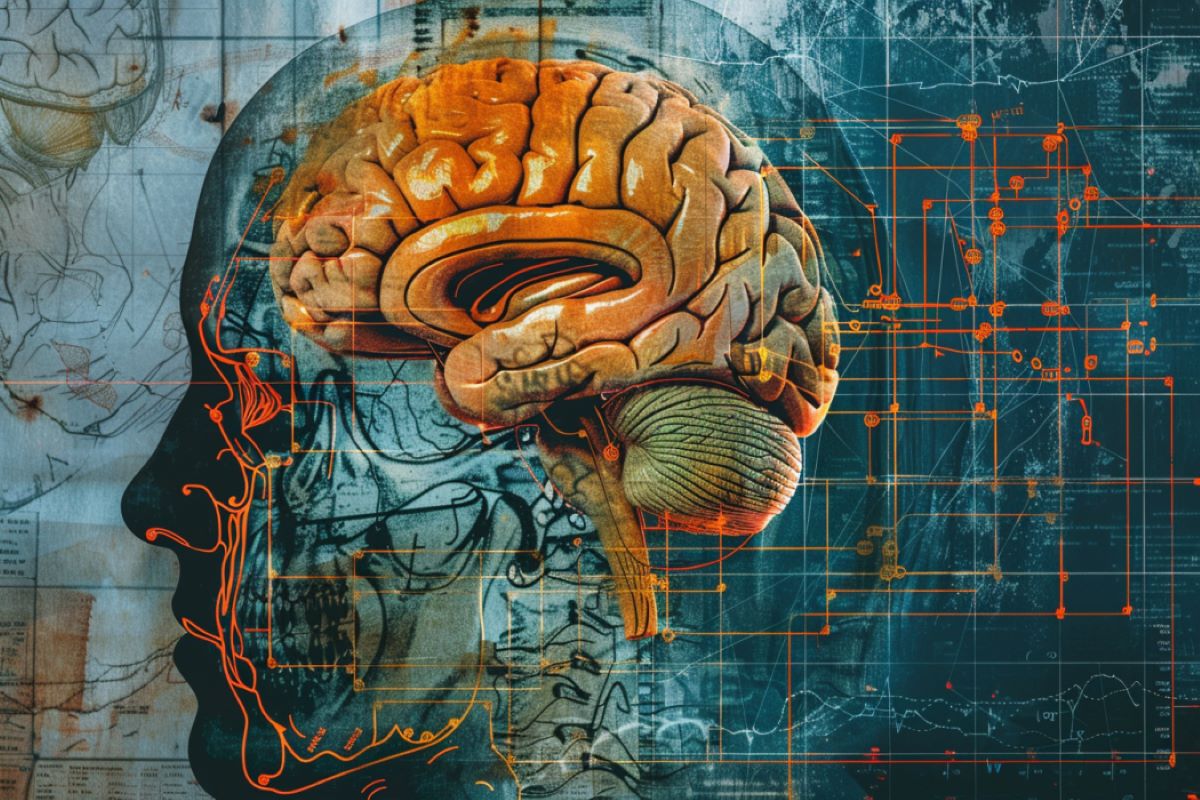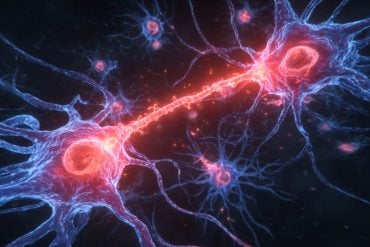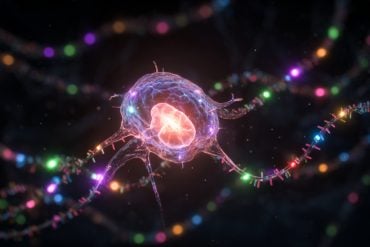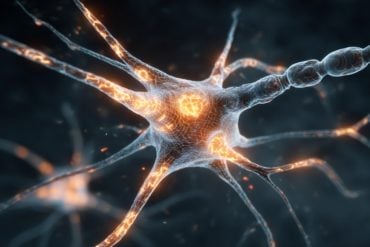Summary: Researchers have identified the SH2B1 gene’s crucial role in regulating food intake and energy expenditure. Mutations in SH2B1 are linked to obesity, type 2 diabetes, and metabolic dysfunction-associated liver disease.
The gene’s activity in the brain’s paraventricular hypothalamus (PVH) and its interaction with the dorsal raphe nucleus influences appetite and body weight. Enhancing SH2B1 function could offer a promising treatment for obesity without the side effects of current drugs.
Key Facts:
- SH2B1 Gene: Regulates food intake and energy expenditure, influencing obesity.
- Brain Regions: Acts in the PVH and interacts with the dorsal raphe nucleus.
- Therapeutic Potential: Enhancing SH2B1 could treat obesity without adverse effects.
Source: University of Michigan
Obesity is a complicated condition, caused by a combination of genetics, the food environment, behavior, and other factors.
For millennia, getting enough food to survive and thrive was difficult. For most people, it’s now as easy as opening a refrigerator.
A gene called SH2B1 has been shown to play an important role in regulating food intake.
SH2B1 mutations in people are associated with obesity, type 2 diabetes and metabolic dysfunction-associated steatotic liver disease, formerly known as non-alcoholic fatty liver disease.
“This gene controls feeding and energy expenditure. Obesity is caused by two opposing axes: If you eat too much, you gain fat. Spend too little energy and fat accumulates,” said Liangyou Rui, Ph.D., Department of Molecular & Integrative Physiology and the Elizabeth Weiser Caswell Diabetes Institute at the U-M Medical School.
A study from Rui and team identifies where this gene is acting inside the brain, an area called the paraventricular hypothalamus, or PVH, which is involved in regulating blood pressure and fluid balance.
Additionally, the team discovered that neurons that express SH2B1 create a circuit, talking to neurons downstream in an area known as the dorsal raphe nucleus, located in the brainstem.
This area is implicated in energy balance and body weight maintenance and emotion motivated behavior.
Stimulating this circuit suppresses appetite in mice. Conversely, silencing the SH2B1 expressing neurons in the PVH leads to obesity.
The team also uncovered the molecular mechanism behind how SH2B1 helps maintain weight, in part by enhancing BDNF/TrkB signaling, which during development promotes brain growth and in a mature brain, maintains brain health. When this signaling goes awry, obesity and metabolic disease develop.
One theory, Rui notes, is that the inflammation associated with weight gain can negatively affect this pathway in an indirect way, weakening the signals to stop eating.
“We know that SH2B1 action is important, as it is highly conserved across species, from the fruit fly to humans,” said Rui.
“It functions as sort of a universal currency, not only enhancing cell signaling, but the hormones leptin and insulin, which help regulate appetite and metabolism.”
Furthermore, there have so far been no identified side effects to enhancing SH2B protein, unlike currently popular drugs, such as Ozempic or Mounjaro, that activate glp-1 receptors.
Said Rui, “If we can find a way to enhance SH2B activity, there is huge promise for treating obesity and its related diseases.”
Additional authors include Yuan Li, Min-Hyun Kim, Lin Jiang, Lorelei Baron, Latrice D. Faulkner, David P. Olson, Xingyu Li, Noam Gannot, Peng Li.
The Michigan Research Cores on this work include Metabolic, Physiological and Behavioral Phenotyping Core, Michigan Metabolomics and Obesity Center and the University of Michigan Center for Gastrointestinal Research.
About this genetics and obesity research news
Author: Kelly Malcom
Source: University of Michigan
Contact: Kelly Malcom – University of Michigan
Image: The image is credited to Neuroscience News
Original Research: Open access.
“SH2B1 Defends Against Energy Imbalance, Obesity, and Metabolic Disease via a Paraventricular Hypothalamus→Dorsal Raphe Nucleus Neurocircuit” by Liangyou Rui et al. Advanced Science
Abstract
SH2B1 Defends Against Energy Imbalance, Obesity, and Metabolic Disease via a Paraventricular Hypothalamus→Dorsal Raphe Nucleus Neurocircuit
SH2B1 mutations are associated with obesity, type 2 diabetes, and metabolic dysfunction-associated steatotic liver disease (MASLD) in humans. Global deletion of Sh2b1 results in severe obesity, type 2 diabetes, and MASLD in mice.
Neuron-specific restoration of SH2B1 rescues the obesity phenotype of Sh2b1-null mice, indicating that the brain is a main SH2B1 target.
However, SH2B1 neurocircuits remain elusive. SH2B1-expressing neurons in the paraventricular hypothalamus (PVHSH2B1) and a PVHSH2B1→dorsal raphe nucleus (DRN) neurocircuit are identified here. PVHSH2B1 axons monosynaptically innervate DRN neurons.
Optogenetic stimulation of PVHSH2B1 axonal fibers in the DRN suppresses food intake. Chronic inhibition of PVHSH2B1 neurons causes obesity. In male and female mice, either embryonic-onset or adult-onset deletion of Sh2b1 in PVH neurons causes energy imbalance, obesity, insulin resistance, glucose intolerance, and MASLD.
Ablation of Sh2b1 in the DRN-projecting PVHSH2B1 subpopulation also causes energy imbalance, obesity, and metabolic disorders. Conversely, SH2B1 overexpression in either total or DRN-projecting PVHSH2B1 neurons protects against diet-induced obesity.
SH2B1 binds to TrkB and enhances brain-derived neurotrophic factor (BDNF) signaling. Ablation of Sh2b1 in PVHSH2B1 neurons induces BDNF resistance in the PVH, contributing to obesity.
In conclusion, these results unveil a previously unrecognized PVHSH2B1→DRN neurocircuit through which SH2B1 defends against obesity by enhancing BDNF/TrkB signaling.







